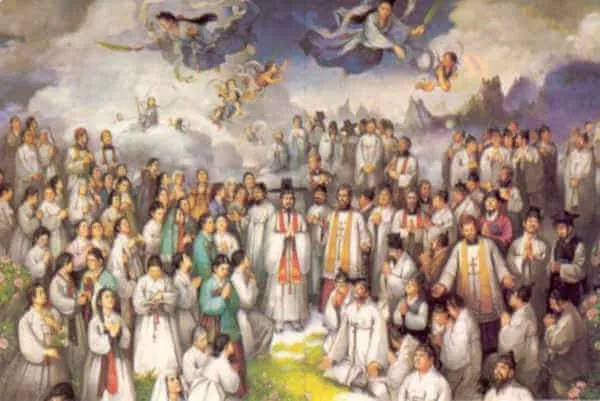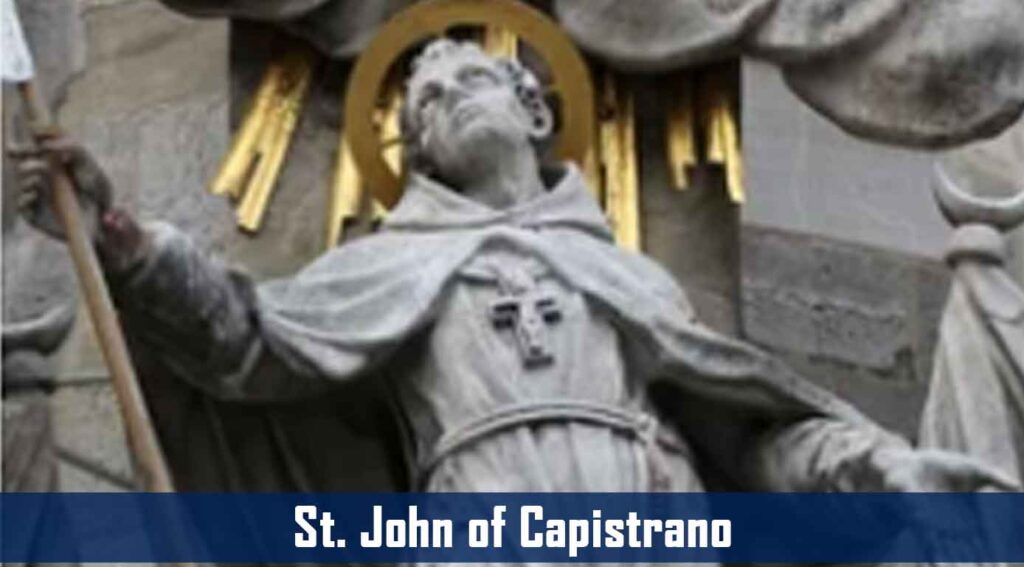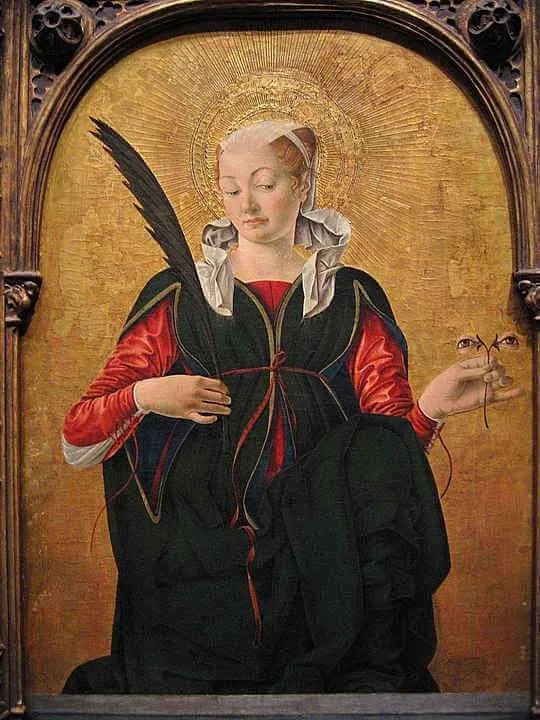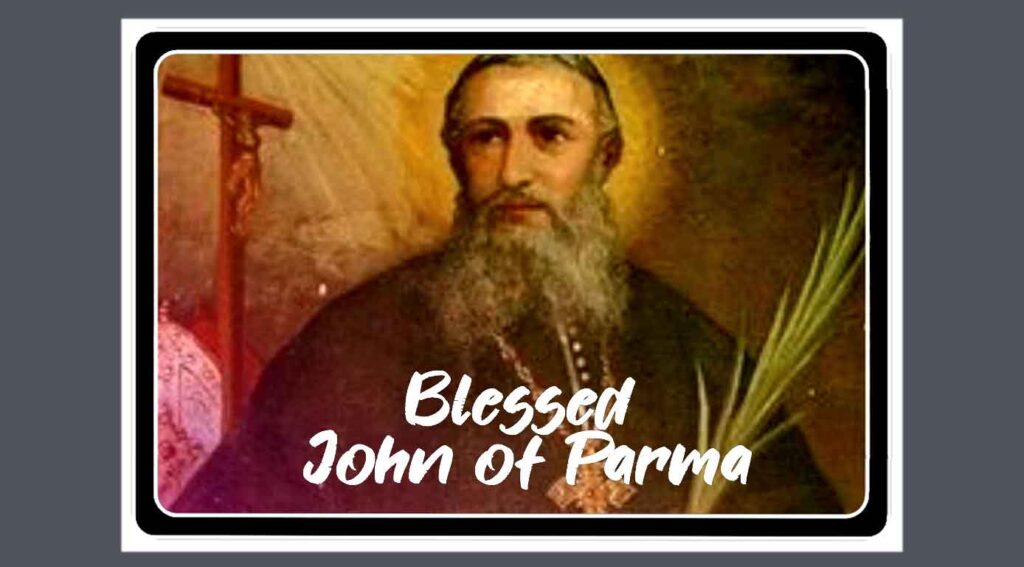Died 1839–1867; Patron Saints of Korea; Canonized by Pope John Paul II on May 6, 1984
From 1392–1897, the Great Joseon Dynasty ruled all of what is today North and South Korea. Though shamanism and Buddhism were among the religious beliefs of Koreans during that period, Confucianism was the main philosophical, ethical, and political system. Within that system, a clear hierarchy was established within the family and social structures, with the king on top. This class system was at the heart of their culture. Ancestors were also highly honored and even ritually worshiped, and various human virtues were emphasized, studied, and fostered.
Catholicism was first introduced into Korea via China. The Jesuit Matteo Ricci was one of the first missionaries to step foot in China and introduce the Catholic faith in 1583. Father Ricci and his companions attempted to blend into the culture, learn the language, and teach math, science, astronomy, and mapmaking. They were the first to translate the catechism into the Chinese language. In 1603, a Korean diplomat named Yi Su-gwang was introduced to Matteo Ricci’s catechism in Beijing and returned to Korea, bringing that material with him. Over the subsequent century, the Catholic faith was studied, debated by Confucian scholars, and eventually outlawed by the king in the mid-eighteenth century after determining that Catholicism contradicted various Confucian teachings, such as societal hierarchies and ancestor worship.
In 1784, a twenty-eight-year-old nobleman named Yi Seung-Hun, who had learned about Catholicism in Korea, accompanied his father on a diplomatic mission to Beijing. While there, he sought out some Catholic priests and was baptized as Peter, becoming the first known Korean convert to Catholicism. When he returned to Korea, he brought with him crucifixes, rosaries, statues, and holy images, and shared his newfound faith over the next decade. Catholicism grew covertly, led by the laity. One of the reasons that Catholicism was so attractive to the Koreans was that it placed all people on the same level, eliminating the unjust hierarchy promoted by Confucianism. Catholicism enabled everyone to see each other as equals, individually loved and redeemed by Christ, making them all brothers and sisters.
As the faith slowly grew, the converts asked the Chinese Church for priests. In 1795, a Chinese missionary priest named Father James Zhou Wen-mo became the first recorded priest to step onto Korean soil and offer a clandestine Mass. Over the next six years, it is estimated that the Catholic population grew to about 10,000. In 1801, Father James was arrested and martyred. Though he is not named among today’s canonized saints, he and 123 other early Korean martyrs were proclaimed as Venerable by Pope Francis in 2014.
The 103 Korean Martyrs whom we honor today were canonized together by Pope John Paul II during his apostolic visit to Seoul, South Korea, on May 6, 1984, commemorating the 200th anniversary of the first Korean convert. Today’s saints suffered martyrdom in Korea during the years 1839–1867. Most of them were killed during three major persecutions in 1839, 1846, and 1866.
Among the martyrs of the 1839 persecution was forty-three-year-old Bishop Laurent-Marie-Joseph Imbert. In 1836, after joining the Paris Foreign Missions Society, Father Imbert was appointed the Vicar Apostolic of Korea, ordained a bishop, and entered Korea with ten companions in 1837. For about two years, he and his fellow missionaries hid during the day and ministered in secret at night to the covert Catholic population. In August 1839, Bishop Imbert was betrayed to the authorities who were growing increasingly concerned about the threat the Catholic faith posed to the traditional practices of class hierarchy and ancestor worship. Aware of the potential widespread persecution, Bishop Imbert turned himself in to the authorities and subsequently urged two fellow French priests, Fathers Pierre Philibert Maubant and Jacques Honoré Chastan, to do the same, in the hopes that the sacrifice of their lives would spare the lives of their people. After brutal tortures in an attempt to force them to renounce their faith failed, they were executed on September 21. Their bodies were put on public display for several days.
Catholicism, however, could not be stopped. The seed had been planted, began to grow, and was bearing good fruit. The two martyrs specifically mentioned in today’s memorial are Sts. Andrew Kim Tae-gŏn and Paul Chŏng Ha-sang. Paul was born in 1795 into a noble Korean family. He was a lay catechist and a married man. In addition to teaching the Catholic faith, Paul made several trips to Beijing to convince the Paris Foreign Missionary Society to send priests to Korea. He even wrote to the pope with the same request. Partly due to his efforts, Bishop Imbert and his ten missionary companions were sent to minister to the needs of the clandestine Korean Catholic community. In 1839, Catechist Paul Chŏng Ha-sang was martyred during the same persecution that took the life of Bishop Imbert.
Andrew Kim was also born into the noble ruling class of the Joseon Dynasty. His parents were among the many new converts to Catholicism. In 1836, at the age of fourteen or fifteen, Andrew was baptized. Three years later, his father was among the 1839 martyrs and is included in the list of today’s saints. After Andrew was baptized, he traveled 1,300 miles to the Portuguese colony of Macau where he entered seminary. He was later sent to the Philippines to complete his theological training, and in 1845, was ordained in Shanghai as the first Korean priest. Shortly afterward, he secretly returned to Korea via a treacherous sea journey so as to avoid the border guards and to begin his priestly ministry in Korea.
Father Andrew’s ministry in Korea was short-lived, but abundantly fruitful. In addition to offering the Sacraments in secret and teaching the faith, he helped to coordinate the arrival of other French missionary priests. His activity, however, did not go unnoticed. He was arrested in 1846 and subjected to brutal tortures in an attempt to get him to renounce his faith. Father Andrew not only remained strong in the profession of his faith while imprisoned, he also wrote several letters, including a most inspirational one to his parishioners. In that letter, he addressed the hardships that his parishioners would face, offered them hope, pointed them to salvation in Christ, and encouraged them to remain firm in their faith by finding strength in the teachings of the Catholic Church. He died by beheading on September 16, 1846, on the banks of the Han River at the age of twenty-five.
Persecution of Christians continued for the next twenty years, and in 1866, the worst persecution took place, claiming thousands of lives. In all, it has been estimated that between 10,000–20,000 Christians were martyred in Korea during the nineteenth century. The attempts to stop conversions to Catholicism in Korea were brutal. Imprisonment was not enough. Death was not sufficient. Cruel torture was the weapon used by the rulers to deter the spread of the faith. The 103 martyrs we honor today tell us that those efforts failed. Furthermore, the 123 martyrs proclaimed as venerable in 2014 give further credence to the fruitfulness of faith in the face of persecution.
As we honor today’s Korean martyrs, we are reminded that an authentic encounter with Christ so transforms a person that Christ becomes the center of his or her life. Real faith cannot be stopped. These martyrs chose faith over their earthly lives and eternity over temporal comforts. Their united witness should challenge each one of us to examine how deeply we believe in Christ. Is your faith strong enough to endure what they endured? If not, seek their intercession today and recommit yourself to making Jesus Christ the center of your life.
Source: https://mycatholic.life/saints/saints-of-the-liturgical-year/september-20—sts-andrew-kim-taegon-paul-chong-hasang-and-companions/








